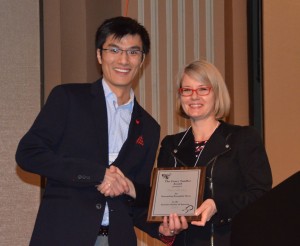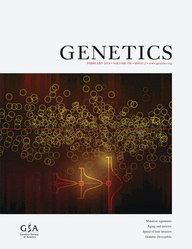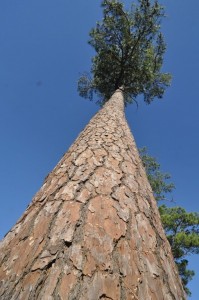Enter your address to receive notifications about new posts to your email.
Articles tagged Transposable Elements
(6 results)
-
Lineage specific retrotransposons shaped the genome evolution of domesticated rice
Rice is one of the most important food crops on earth. Like many other plants, the genome of this critical global species is dominated by transposable elements—selfish genes that multiply themselves to the detriment of their host. In the June issue of G3, Zhang and Gao analyze the genomic long terminal repeat (LTR) retrotransposon content…
-
The fungus-fighting secrets hiding in the sugar pine’s enormous megagenome
Towering sugar pine trees dominate the mountain forests of California and Oregon. They are the tallest pine trees in the world, regularly growing to skyscraper heights of over 100 meters. But these forest behemoths are under attack from a very tiny foe: an invasive fungus. White pine blister rust was accidentally introduced to western North…
-
GSA member Zhao Zhang receives NIH Director’s Early Independence Award
GSA member Zhao Zhang was named as one of 16 recipients of the NIH Director’s Early Independence Award for 2015, joining Jason Sheltzer. Established in 2011, the Early Independence Awards program provides an opportunity for exceptional junior scientists who have recently received their doctoral degree or finished medical residency to skip traditional post-doctoral training and move immediately into independent research…
-
Zhao Zhang receives Larry Sandler Memorial Award for outstanding PhD in Drosophila research
This year’s Larry Sandler Memorial Award for an outstanding PhD dissertation in Drosophila research was presented to Zhao Zhang. Zhang, pictured receiving the prestigious award from Erika Bach (New York University), delivered the award lecture on the opening night of last week’s 56th Annual Drosophila Research Conference in Chicago, IL, organized by GSA. He carried…
-
Old Transposable Elements, New Tricks
Transposable elements don’t proliferate in genomes at a steady pace; they often arrive in bursts. But models of neutral TE evolution assume transposition occurs at a constant rate. That makes it harder to test, for instance, whether low TE allele frequencies in a population are due to negative selection or just a recent transposition burst.…
-
Assembling a Colossus
The loblolly pine genome is big. Bloated with retrotransposons and other repetitive sequences, it is seven times larger than the human genome and easily big enough to overwhelm standard genome assembly methods. This forced the loblolly pine genome sequencing team, led by David Neale at the University of California, Davis, to look for ways to…







